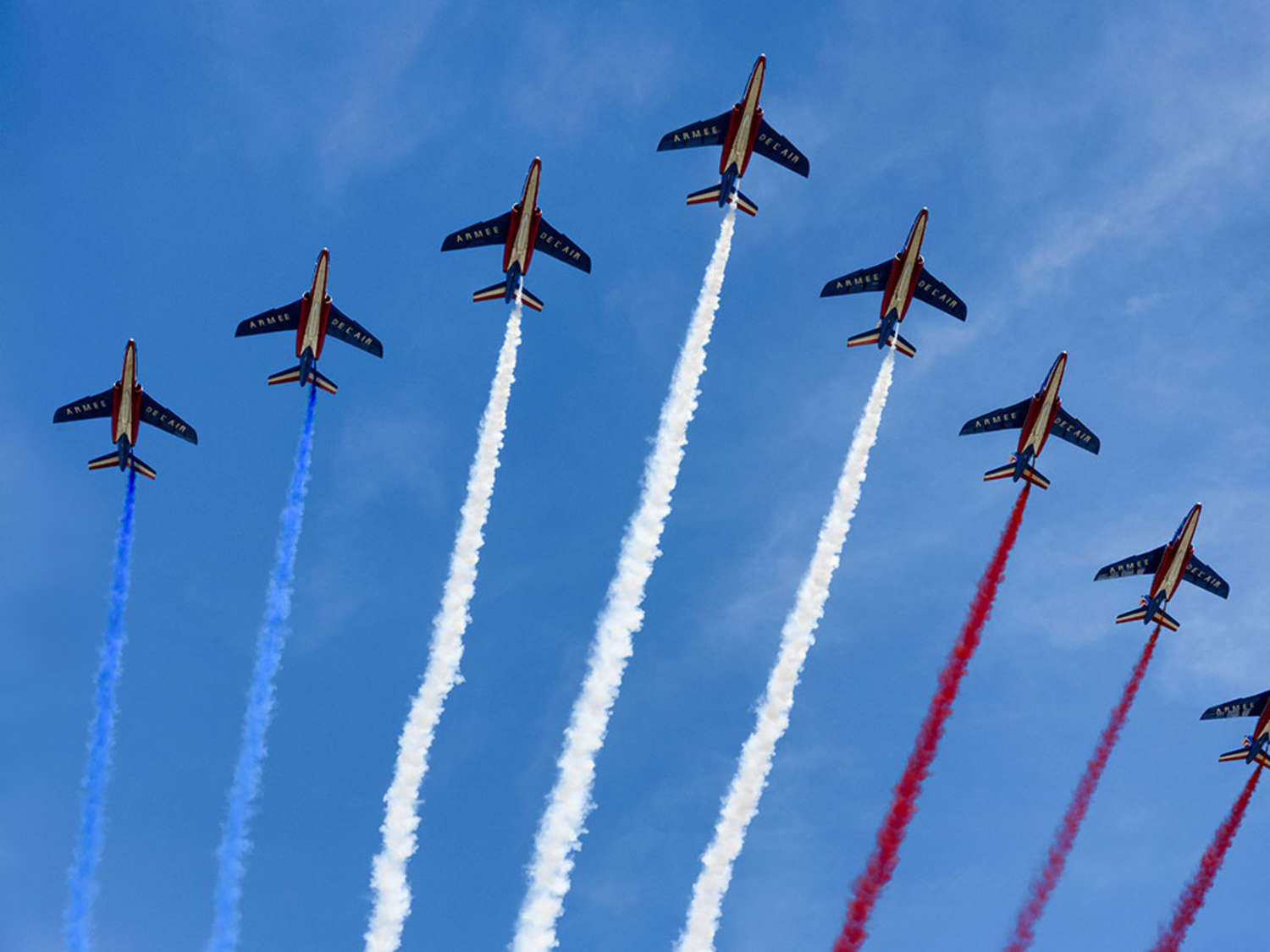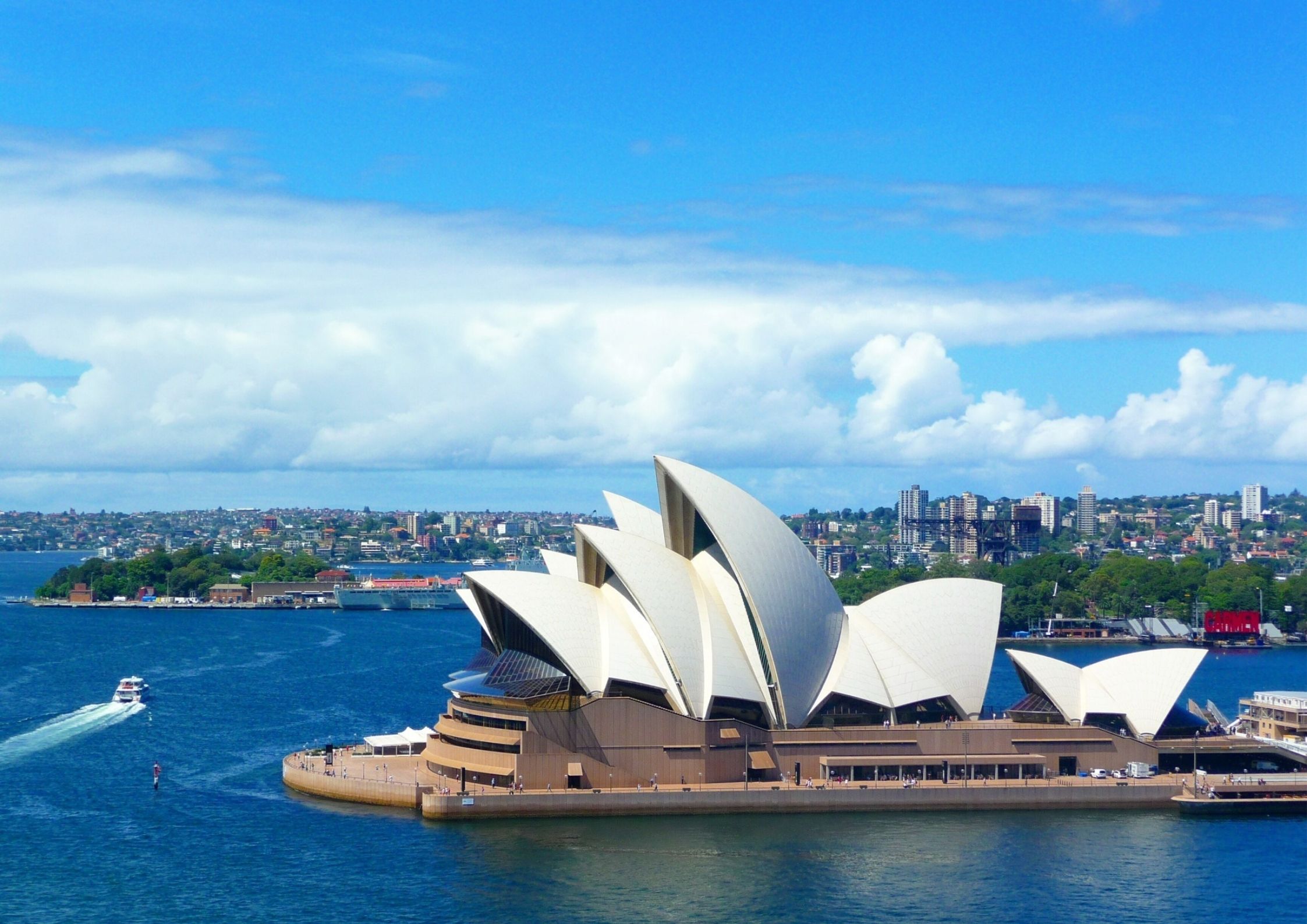2021: Welcome back to Paris!
Bastille Day, known in France as le 14 juillet, is marked with parades, parties, fireworks, and singing of La Marseillaise, the French national anthem. Celebrating the cherished French Republican ideals of liberty, equality, and fraternity, the national holiday honors two important events in French history: the storming of the Bastille on July 14, 1789, and its commemoration on July 14, 1790, the Fête de la Fédération.
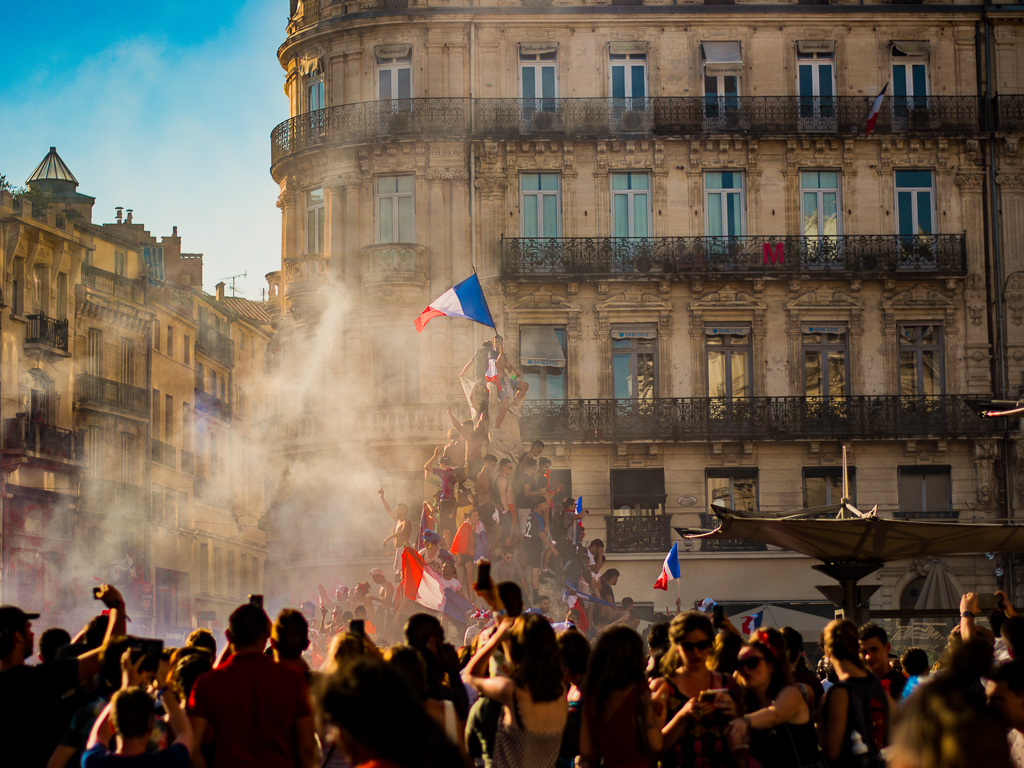
Bastille Day Today
Since 1880, a ceremonial military parade has kicked off the 14th of July festivities, rung in by church bells and gun salutes. The parade has taken place on Paris’ Champs-Élysées avenue every year since 1918, except during WWII when the city was under German occupation. The procession starts at the Arc de Triomphe and heads to the Place de la Concorde, where the President of France, his ministers, and invited foreign dignitaries stand. The French Air Force flies over the Champs-Élysées, leaving vivid trails of smoke in the tricolore blue, white and red colors of the national flag. Smaller scale military parades also take place in other cities throughout the country.
After the parade, families and communities celebrate with gatherings in cafés and restaurants, picnics, barbecues, shows, live music, games, and pétanque tournaments. Monuments and museums such as the Louvre offer free entry.
Much like in the United States, the French national holiday would not be complete without grandiose fireworks displays in the evening. In Paris, an annual themed fireworks show takes place in front of the Eiffel Tower, usually preceded by a massive concert on the Champs de Mars. French people close out the 14th of July celebrations with free dance parties and festivals. On the nights of the 13th and 14th, there are the most famous Bals des Pompiers (pompier = fireman; bal = ball or dance) in firehouses across France; essentially these are massive dance parties throughout French fire stations. The parties are for people of all ages and involve dancing, drinking and live music until the early hours of the morning.
If you're looking to celebrate Bastille Day from the comfort of your home, we suggest listening to some classics, a lot of which you'd hear at Bals des Pompiers:
- Daniel Balavoine - Vivre Ou Survivre
- Claude Francois - Belinda
- Joe Dassin - Les Champs-Elysées
- Johnny Hallyday - Laura
- France Gall - Résiste
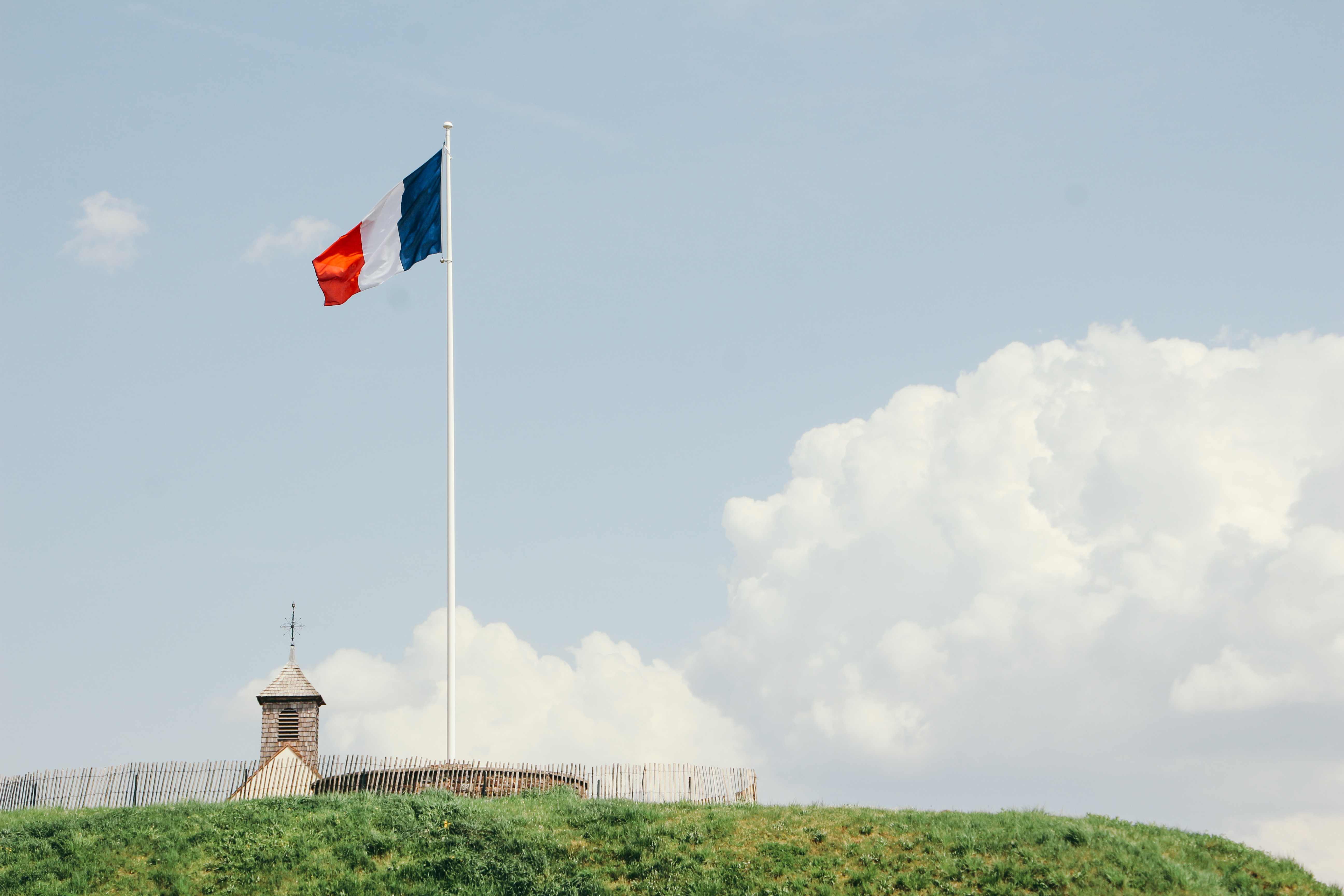
Political Turmoil
In 1789, France was in the midst of social and political upheaval. The ruling king at the time, Louis XVI, led a country facing a financial crisis due to its participation in the Seven Years’ War and the American Revolutionary War. Widely unpopular, he was viewed as a symbol of the Ancien Régime, a fifteenth century political system that enforced the divine right of kings. Facing an increasingly resentful population, he failed to impose a series of reforms, and in May 1789, he was forced to accept the rise to power of the Estates General, a group comprised of representatives from the clergy, the aristocracy, and commoners (which evolved into the National Constituent Assembly).
The Storming of the Bastille
On July 14, 1789, a crowd of hundreds of Parisians collected weapons and invaded the Bastille. The medieval state prison largely served as a military garrison at the time, holding only a handful of political prisoners, but it was a potent symbol of the monarchy’s tyranny, despotism, and oppression. After a bloody struggle, the protesters liberated the fortress, freed the prisoners, and killed the Bastille’s last governor.
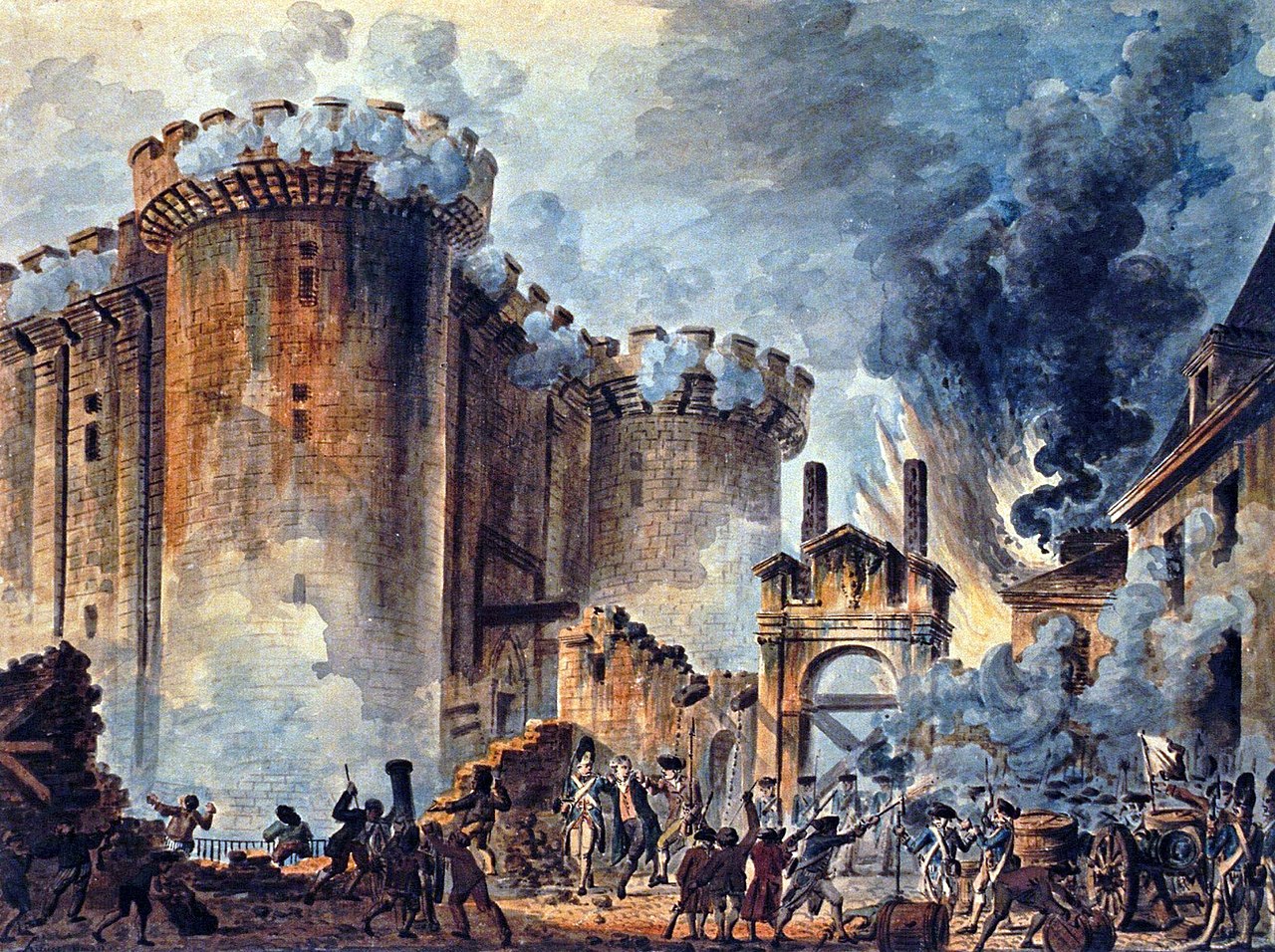
The momentous event marked the shift of the French government from an absolute monarchy to a constitutional monarchy. Louis XVI was stripped of most of his executive authority and the National Constituent Assembly became the de facto ruler of France. Just as important, the violent uprising was the first victory against the old regime and helped bring about the French Revolution.
Fête de la Fédération
The following year, General Lafayette (the same general who served under George Washington in the American Revolutionary War), at the time the head of the Paris National Guard, proposed a celebration of the anniversary of the taking of the Bastille. The governing National Constituent Assembly agreed to the event, which intended to spread a message of peace and French national unity.
The Fête de la Fédération brought together hundreds of thousands of citizens from across the country on the Champ de Mars in Paris. Following a mass, General Lafayette and Louis XVI took civic oaths to the Constitution. After the ceremony, French citizens continued the festivities with fireworks and drinking.
In an interesting twist of history, General Lafayette was presented with the key to the Bastille, which he sent to George Washington as a symbol of liberty. Today, the key can be viewed on display at George Washington’s historic home of Mount Vernon.
National Holiday
In the years that followed, 14th of July celebrations were abandoned. The national holiday was celebrated on various dates, depending on the regime in place. It was not until May 1880 that the 14th of July was proposed as the official national holiday. The language used in the proposed law purposefully did not specify whether the holiday was a commemoration of the storming of the Bastille (1789) or the Fête (1790). The French Parliament adopted the law and the first official celebration took place on July 14, 1880.
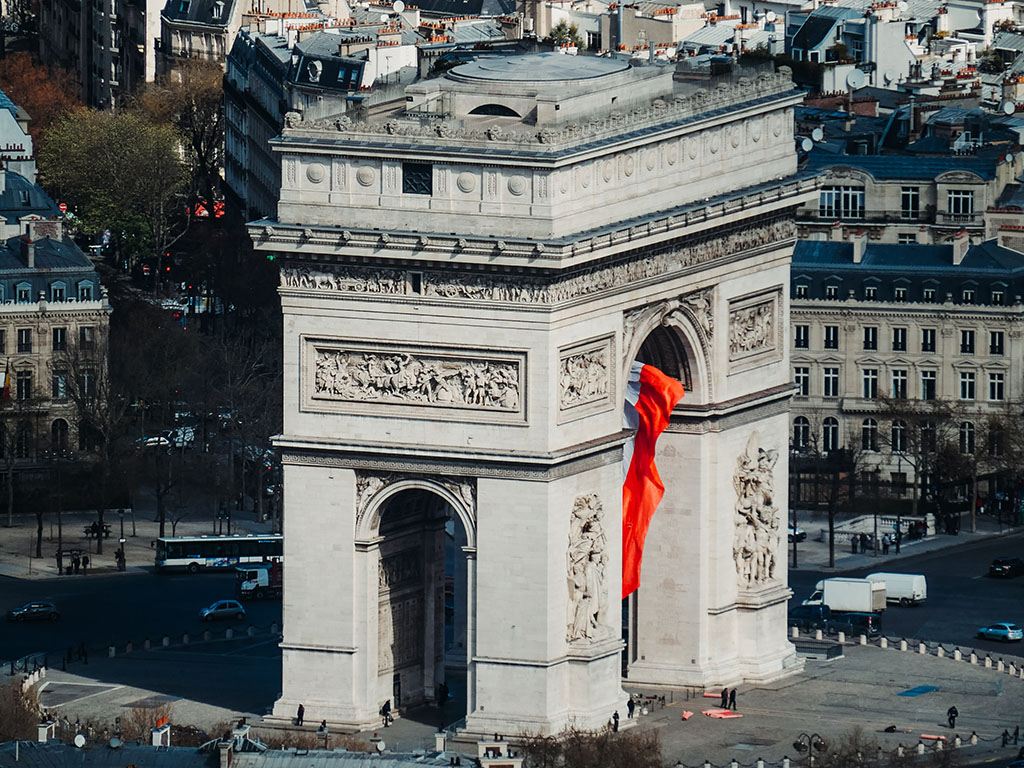
Join our Paris French Revolution History Tour to learn about the events and landmarks of 18th century revolutionary Paris with a history expert!
Ready to learn with a true expert? Get a comprehensive view with one of Context's private or small group tours in Paris! Or learn more about France from the comfort of your own home with our live, upcoming virtual seminars and courses.
Other blog posts you may be interested in:
- Royal Rivalry: Diane de Poitiers and Catherine de Medicis
- Guide to French Wine Regions
- Women in the Paris Pantheon
- Landmarks of Paris
- Reflections on the 75th Anniversary of D-Day
